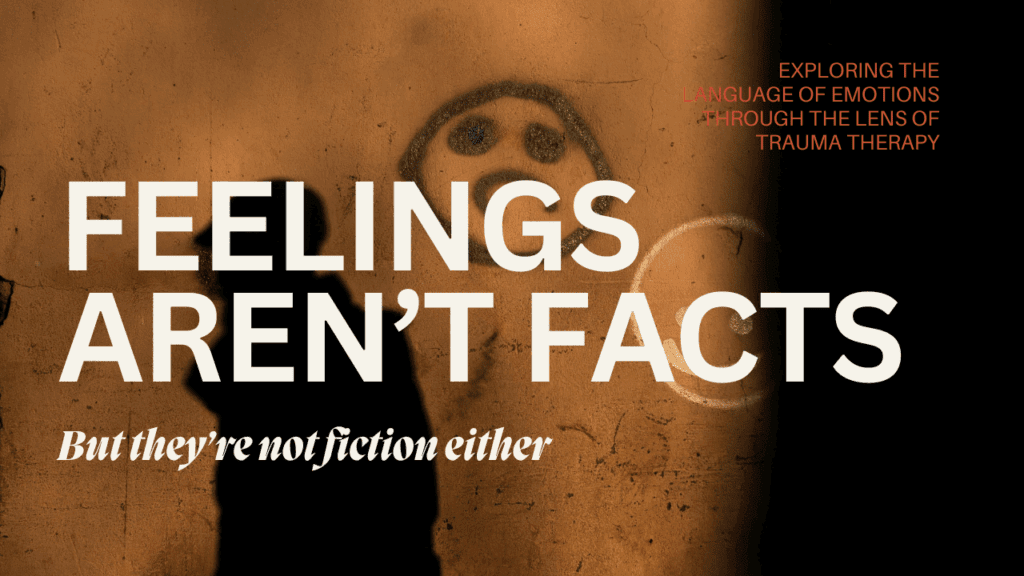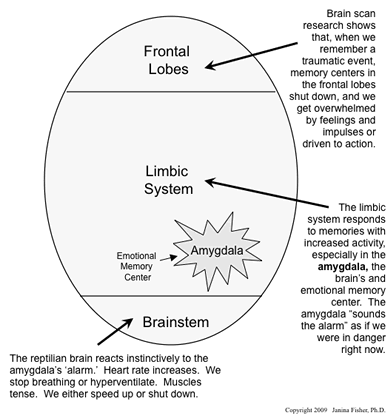
We often hear the phrase “feelings aren’t facts.” But what do we really mean by that?
It’s not that feelings are false. They are real, raw, and deeply alive in our bodies. But they don’t always reflect the full truth of the present moment. Feelings are messengers signaling something underneath, something tender, something in need of attention.
In trauma therapy, especially when working with survivors of complex or developmental trauma, we learn to listen closely to the quiet wisdom of the body. Feelings are often the first clue. They arrive before words, sometimes before thought, asking us to pause and wonder:
What is hurting? What is longing to be known?
Feelings point us toward our needs. Not just the foundational ones like air, water, shelter, but also the deeper ones: connection, safety, autonomy, celebration, meaning.
As described in Nonviolent Communication (NVC), these needs are universal. We all share them, though we express and pursue them in different ways.
Here’s where it gets complicated: we often confuse needs with asks—what we want someone else to do or say. “I need you to listen to me,” we might say. But underneath that ask is something more vulnerable: a yearning for safety, for attunement, for being truly seen.
Frameworks like Maslow’s Hierarchy of Needs or Tony Robbins’ human needs psychology offer helpful maps of this inner terrain giving language to our longings for certainty, novelty, significance, love, growth, and contribution.
Still, something essential gets lost when we move too quickly from feeling to action. The discomfort of fear might push us to shut down. The heaviness of helplessness might convince us we’ve failed. The restlessness of boredom might spiral into self-doubt or shame.
But what if these emotions weren’t problems to fix? What if they were signals to follow?
- Fear may point to a need for safety or stability.
- Boredom might be a sign of longing for creativity or challenge.
- Despair may speak to a quiet hunger for agency, meaning, or belonging.
- Joy often tells us that needs for connection, expression, or celebration have been met.
The danger lies not in the feeling itself but in mistaking it for the whole truth. In trauma work, we call this “emotional reality” when emotion becomes the full narrative, unexamined and overwhelming.
For those living with trauma, emotional reality can be particularly potent because, as many trauma therapists say, we remember trauma less in words and more in sensations, feelings, and states of the body.
This is especially true when the right brain—home to emotion, imagery, and survival instincts—takes over. It becomes louder than the left brain, which governs logic, sequencing, and language. As Dr. Janina Fisher, a trauma treatment expert, teaches trauma often disrupts the integration between these hemispheres.
The left brain may continue with everyday tasks, while the right brain stores intense, implicit memories and reflexive responses. The result? Fragmentation. We might feel cut off from ourselves, stuck in shame or fear, or trapped in cycles of overthinking, dissociation, or self-blame.
This happens because trauma activates the limbic system and brainstem—parts of the brain responsible for fight, flight, freeze, or fold/submit—while frontal lobe activity, responsible for context, regulation, and reflection, dims or shuts down.

This is where trauma-informed therapy comes in. Modalities like EMDR, Somatic Therapy, and IFS or Parts Work offer a bridge between emotion and understanding.
These approaches help us reweave the threads, not by forcing insight, but by creating a pause. By inviting curiosity.
Not certainty.
Not immediate answers.
Just gentle, honest questions.
“What am I feeling right now?”
“What might this be pointing to?”
“Why now?”
“What need is asking to be heard?”
These questions light up the left brain. They restore access to the parts of us capable of reflection, meaning-making, and compassionate storytelling.
They invite breath. They offer pause. They make space for integration.
So when we say “feelings aren’t facts,” we’re not minimizing emotion. We’re honoring it without letting it run the entire show. We’re learning to ask: What else might be true?
In the end, healing isn’t about fixing ourselves. It’s about becoming more fluent in our own emotional language. Learning to tend to our needs with gentleness. And slowly, bravely, rewriting the story.
If you’re curious about exploring these themes more deeply or seeking support in understanding your emotions and needs, trauma therapy can help. Please visit my services page for more information.